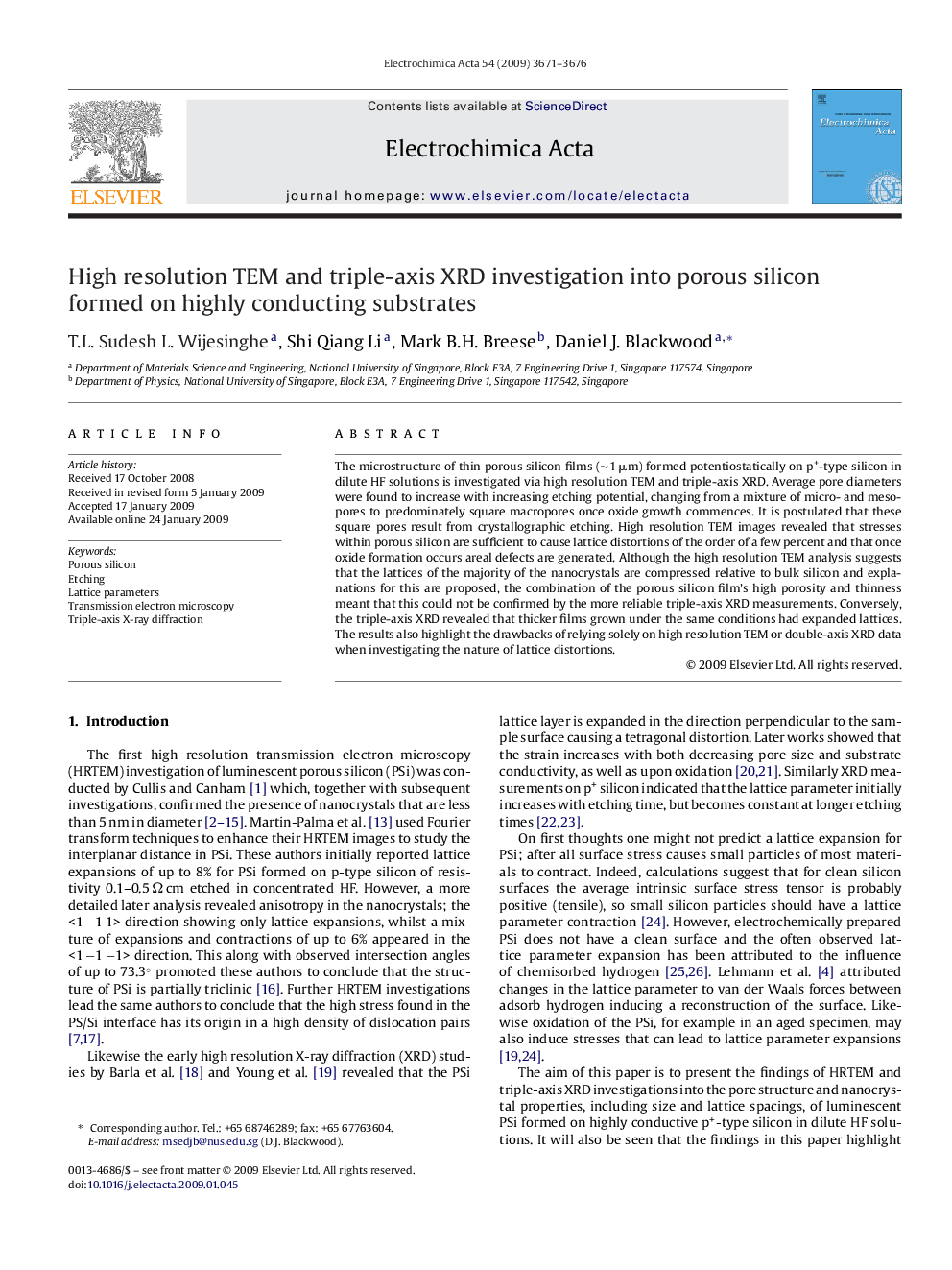| Article ID | Journal | Published Year | Pages | File Type |
|---|---|---|---|---|
| 193082 | Electrochimica Acta | 2009 | 6 Pages |
The microstructure of thin porous silicon films (∼1 μm) formed potentiostatically on p+-type silicon in dilute HF solutions is investigated via high resolution TEM and triple-axis XRD. Average pore diameters were found to increase with increasing etching potential, changing from a mixture of micro- and mesopores to predominately square macropores once oxide growth commences. It is postulated that these square pores result from crystallographic etching. High resolution TEM images revealed that stresses within porous silicon are sufficient to cause lattice distortions of the order of a few percent and that once oxide formation occurs areal defects are generated. Although the high resolution TEM analysis suggests that the lattices of the majority of the nanocrystals are compressed relative to bulk silicon and explanations for this are proposed, the combination of the porous silicon film's high porosity and thinness meant that this could not be confirmed by the more reliable triple-axis XRD measurements. Conversely, the triple-axis XRD revealed that thicker films grown under the same conditions had expanded lattices. The results also highlight the drawbacks of relying solely on high resolution TEM or double-axis XRD data when investigating the nature of lattice distortions.
